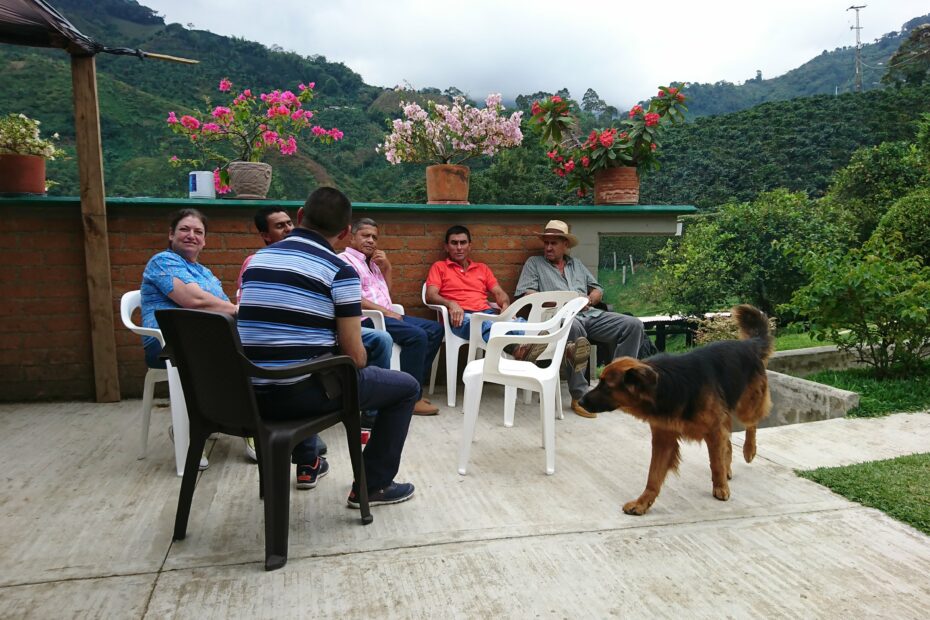THERE WAS once a time when the global price of coffee didn’t hang so heavily over producing countries.
A quota system, operated by the International Coffee Organization (ICO) between 1962 and 1989, ensured that when coffee supplies exceeded demand they were withheld from the market. A target price was set, and export quotas were allocated to each producer. When prices fell below the target, quotas were decreased; if they rose above it, quotas were increased.
Although it successfully stabilised prices during its relatively short lifespan, the system eventually broke down after a failure to renegotiate export quotes. This left producers devastatingly vulnerable to market volatility. With little bargaining power on matters concerning trade, they were open to exploitation and the crippling impact of low prices.
But from the ashes of the quota agreement rose coffee associations: national organisations designed to give a voice to the under-represented coffee-farming communities. Many grew from rudimentary local group into international bodies that command global influence today, including the African Fine Coffees Association (AFCA) and Asociación Nacional del Café (Anacafé) in Guatemala.
Most coffee associations are chiefly responsible for representing the interests of the country’s coffee sector. This can take a number of forms, from marketing the coffee and establishing methods of evaluation to attending international forums and funding gender-inclusion training programmes.
“Their purpose is to promote the interests of the coffee industry as a whole,” says Sara Morrocchi, the founder of Vuna Origin Consulting. “I don’t think it’s just about the producers, but the entire value chain.”
However, as specialty coffee and its emphasis on independent, direct trade become increasingly widespread, the relevance of national organisations has come into question.

The rise of direct trade
Direct trade has long been hailed as a way for producers to gain independence from global coffee prices and form strong relationships with buyers. By negotiating prices and expressing their needs directly, the idea is that producers can secure the best terms and prices for their products.
Unlike traditional trade, this approach typically bypasses associations and state mechanisms, with contracts and shipping arrangements often made by the buyers themselves.
The rise of direct trade has been credited with helping to address the coffee industry’s imbalance of power and give agency to producers. Some also believe it has exposed the fragility of coffee associations.
Compounding the issue is the way in which associations are funded – by levying a tax on marketing deals and related services. These taxes, which the associations depend on to survive, can eat into the already thin profit margins of coffee producers, making direct trade the more logical choice.
What’s more, many smallholder farmers have complained in the past of feeling excluded from international meetings where associations are supposed to represent their interests. This exclusion has only fuelled mistrust in these organisations and their ability to advocate for the needs of producers.
“I sometimes think these associations could have more teeth when it comes to policy,” Sara says. “That’s where a lot of the associations struggle: between running a profitable business model and pushing an international agenda to safeguard producers and those who are weakest in the value chain.”

Why coffee associations must adapt
For coffee producers, associations have played a vital role throughout history.
The FNC’s marketing efforts, for example, helped transform Colombia into one of the world’s most sought-after coffee origins – a legacy that can still be felt today. Others, such as Anacafé, carry out important analyses of plants that have directly helped improve the yields and incomes of Guatemala’s farmers.
And Brazil’s Specialty Coffee Association has been pivotal in shifting public perceptions of Brazil away from a producer of inferior, mass-market robusta to one adept at delivering some of the world’s finest arabicas.
Sara emphasises that while the rise of direct trade has been important, it does not mean coffee associations and the work they do have become redundant. “With direct trade, producers have a more direct channel to establish a working framework within the supply chain,” she says. “But I don’t think through direct trade alone you can change the balance of power.
“Direct trade and associations help each other – they are complementary. I don’t think direct trade has or will fix everything. When I started working in coffee in 2007, people were already talking about direct trade. It has obviously improved things, but there are still a lot of challenges.”
However, the extent of associations’ influence depends on how well they adapt to the changing nature of the coffee industry and if they can continue to complement new models of operating, such as direct trade. For example, AFCA has launched an initiative to encourage origin trips, whereby roasters visit and stay on coffee farms, with the idea of boosting direct trade.
Yet associations must also find ways of providing value to producers – especially smallholders – that buyers can’t, whether that means investing in agronomic support, cultivating relationships with other associations, or providing innovative resources for training and education.
Sara adds that models of membership can also play a role, with a view to making them more democratic and putting the interests of producers front and centre.
Only by providing value in areas outside of marketing can coffee associations continue to thrive. That way, if the ground falls from under direct trade, like it did with the ICO’s quota system, they are there once again to catch producers.
Credits: https://intelligence.coffee/

